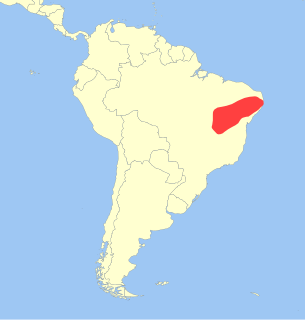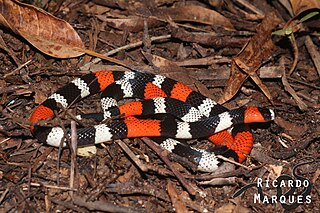 W
WThe giant anteater, also known as the ant bear, is an insectivorous mammal native to Central and South America. It is one of four living species of anteaters, the only extant member of the genus Myrmecophaga, and is classified with sloths in the order Pilosa. This species is mostly terrestrial, in contrast to other living anteaters and sloths, which are arboreal or semiarboreal. The giant anteater is the biggest of its family, 182 to 217 cm in length, with weights of 33 to 50 kg for males and 27 to 47 kg for females. It is recognizable by its elongated snout, bushy tail, long fore claws, and distinctively colored pelage.
 W
WThe Brazilian three-banded armadille is an armadille species endemic to eastern Brazil, where it is known as tatu-bola. It is one of only two species of armadillo that can roll into a ball. It has suffered a 30% decline in population in the last 10 years.
 W
WThe gray brocket, also known as the brown brocket, is a species of brocket deer from northern Argentina, Bolivia, southern Peru, eastern and southern Brazil, Paraguay, and Uruguay. It formerly included the Amazonian brown brocket and sometimes also the Yucatan brown brocket as subspecies. Unlike other species of brocket deer in its range, the gray brocket has a gray-brown fur without reddish tones.
 W
WThe Sao Francisco black tyrant, Caatinga black tyrant or Brazilian black tyrant is a species of bird in the family Tyrannidae.
 W
WMicrurus ibiboboca, the caatinga coral snake, is a coral snake in the family Elapidae. It occurs in eastern Brazil, south of the Amazon.
 W
WThe ocelot is a medium-sized spotted wild cat that reaches 40–50 cm (15.7–19.7 in) at the shoulders and weighs between 8 and 15.5 kg. It was first described by Carl Linnaeus in 1758. Two subspecies are recognized. It is native to the southwestern United States, Mexico, Central and South America, and to the Caribbean islands of Trinidad and Margarita. It prefers areas close to water sources with dense vegetation cover and high prey availability.
 W
WThe white-eared opossum, known as the timbu in Brazil and comadreja overa in Argentina, is an opossum species found in Argentina, Bolivia, Brazil, Paraguay, and Uruguay. It is a terrestrial and, sometimes, arboreal animal, and a habitat generalist, living in a wide range of different habitats.
 W
WThe brown-throated sloth is a species of three-toed sloth found in the Neotropical realm of Central and South America.